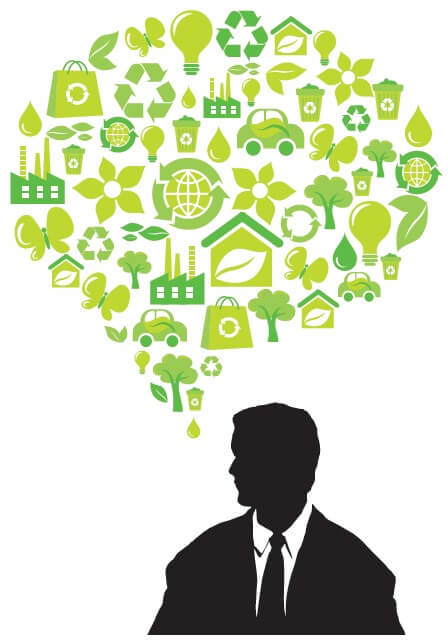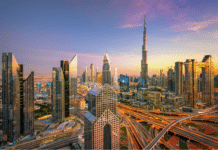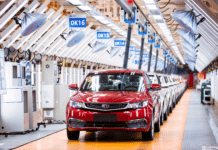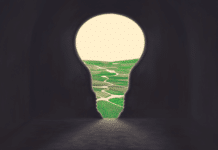Prof. Samuel Frankhauser is Co-Director at the Grantham Research Institute on Climate Change and the Environment at the London School of Economics. In an interview with Tharawat magazine he defines the term ‘Green Growth’ and details its implications for the business community and policy-makers globally.
Interview with Prof. Sam Fankhauser
What does ‘Green Growth’ encompass?
Green growth is the idea that we can increase human prosperity in a way that is not harmful to the environment. Some of the attributes we associate with green growth are:
• Low-carbon: Reducing our dependence on fossil fuels in energy whereby transport and industry is perhaps the most prominent aspect of the green growth strategy, but not the only one.
• Climate-resilient: This covers the notion that we need to adapt to some residual aspects of climate change that are no longer avoidable. So green growth means being prepared for more floods, droughts and other extreme events, for example.
• Bio-diverse: This means protecting the natural environment and halting the rate at which we lose valuable ecosystems, valuable because they provide both tangible and intangible services to us (think of clean air, clean water or the spiritual value of nature).
• Sustainable: This means not overusing natural resources, for example, in the management of fish stock, many of which are currently overfished, or reducing the rate of deforestation.
When we say growth, we also mean growth in measures of prosperity that may well be broader than GDP. Most economists will tell you that GDP is not a good measure of prosperity. So the concept is actually quite broad.
What possibilities does Green Growth hold for private business strategies?
Some people see the move to a green economy as the next industrial revolution. Like other revolutions before it – from the steam engine to the internet – it will produce a lot of winners but also some losers. So it is important for businesses to position themselves right and be in the former camp.
There are massive opportunities for businesses that can provide the environmental goods and services the green economy demands. For example, engineering firms developing more efficient products and production processes, architects devising environmentally friendly homes, construction firms offering flood protection, banks investing in the green economy and manufacturing firms producing wind turbines or solar panels.
HSBC, the bank, estimated a few years ago that the green economy was already as big as the global aeronautics and defence industry. That is several hundred million dollars in annual revenues.
Firms also have to watch their costs and their reputations. Energy and carbon-intensive inputs such as steel may become more expensive, and businesses that do not embrace the green economy may be punished in the market place. Their clients will go elsewhere.
How does Green Growth impact global economies?
I believe the green economy will be a global economy, just as our current, modern economy is. The green economy puts a premium on innovation, efficiency and clever new ideas. The global market is good at stimulating and disseminating these, so the free flow of goods, capital and, with more restrictions, people is part of the story.
Of course, trade can exacerbate environmental issues, as we see with the export of unsustainable timber. But the root cause of these problems is often domestic. The solution is to address these domestic issues, rather than reducing trade. If timber companies can be properly incentivised, regulated and policed, trade in timber products would not be a problem. It would be part of the solution.
How does Green Growth interact with Innovation?
Innovation is absolutely critical for the green economy. Many of the new technologies and production processes we need are still under development. We need innovation to bring down the cost of renewable energy. We need better batteries that extend the range for electric cars. We need a new generation of sustainable biofuels, more efficient production processes in industry and perhaps alternatives to carbon-intensive products like steel and cement.
The winners in the green economy will be innovators and firms that are quick to adopt new technologies. This is an opportunity for newcomers, but incumbent firms, for example in the car industry, are also investing heavily into the green economy.
How will Green Growth impact economic policies?
Many of the goods and services that the green economy promotes do not have an automatic market price. They are what economists call externalities. Goods like clean water or a stable climate. It is the role of policy to put a price on these products, or correct the externality. For example we need policies to put a price on carbon (maybe a carbon tax) or reward the development of clean technologies.
So good public policy is very important for the green economy. Politicians are beginning to realise this, although we cannot honestly say that all the policies we currently see are very good. Many countries still subsidise coal and other forms of energy, for example.
What do you think Green Growth priorities should be for countries in the Middle East?
The Middle East is in an interesting situation. Many countries of the region rely heavily on oil export as a source of wealth. That revenue base may suffer, and it is, therefore, important that the region diversifies economically.
Gas, which is also abundant in the region, will continue to be important. It is only about half as polluting as coal and, therefore, a good short-term alternative to coal. Eventually even gas will become to carbon-intensive as decarbonisation plans progress. The UK is now approaching this point. Middle Eastern countries, therefore, have an interest in developing carbon capture and storage technology, which turns coal and gas into cleaner fuels. This would extend the lifetime and value of the region’s hydrocarbon resources.
But the Middle East is also rich in renewable resources, especially solar. North Africa has ambitious plans for big solar energy parks that would export electricity to Europe. The Middle East has the same potential, although its electricity would be for domestic consumption. With the development of these technologies comes know-how and experience that will be in high demand in a green economy.
Tharawat Magazine, Issue 13, 2012

















